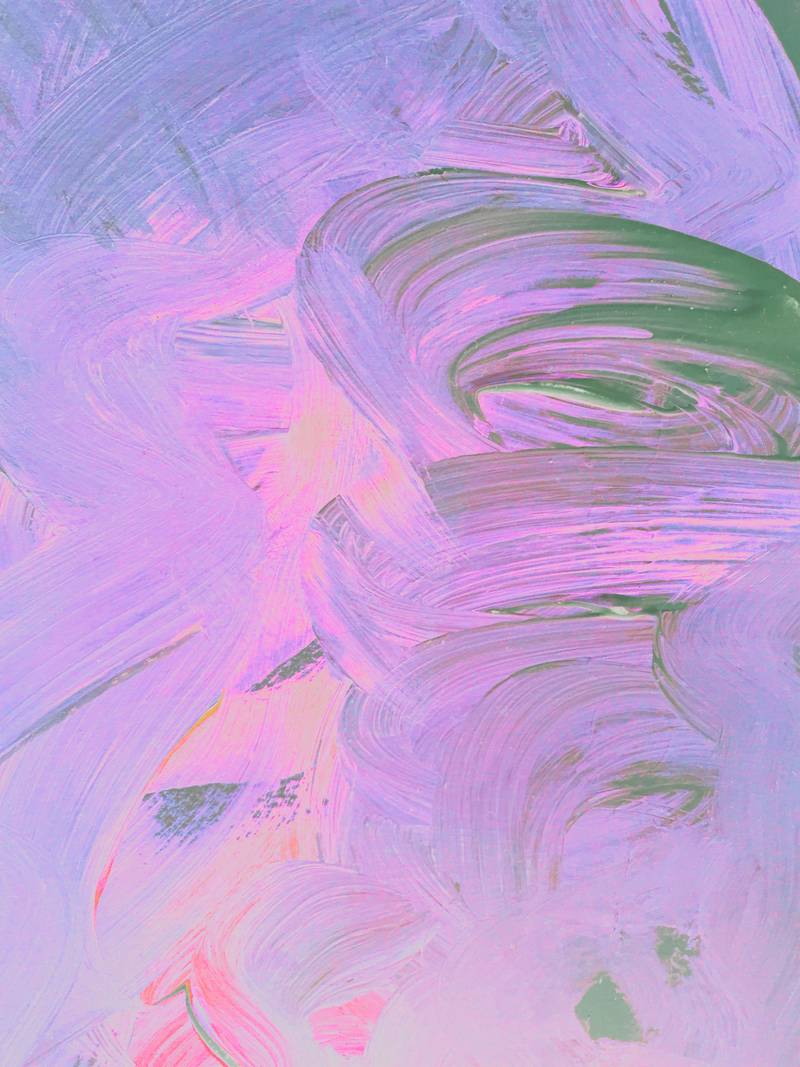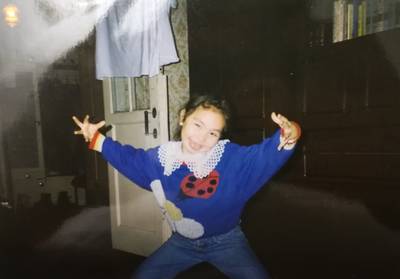Emma de Carvalho is a writer and artist with an interest in identities, cultures, embodiment, and changing artistic practices. She is completing her Master’s thesis at the University of Helsinki. Her current research explores femininities in film and TV (a project she is very excited about).
For a while, I wanted to start a visual journal on canvas, an eternal work-in-progress, to which I could add to now and then over many years. The goal of this visual journal was for it to become a highly detailed painting that would capture various moments and stages of my life from season to season. There was something very calming and fulfilling about creating a single work of art over many years. Last autumn, my grandmother gifted me a large blank canvas that she wasn’t going to use. It was perfect for my project. And so I started to paint. And I loved it, at first. I had newspapers sprawled all over the floor of my studio apartment. Paintbrushes and acrylics bottles sat on the floor day after day, a constant reminder that the opportunities for this piece were endless. But after a while, I started to become frustrated waking up to an unfinished project every morning. It was not that it was unfinished, but rather the idea that it was not even supposed to be finished: it was the eternal work-in-progress. I wanted it to be complete and out of the way, so I hastily added to it in the hopes of filling it up entirely. And I hated it. I hated how the colours didn’t match and how the characters were positioned at different angles. It looked rigid and clumsy, so I grabbed the largest brush I had and painted over the whole mess with white. I let the paint dry, cleaned the floor, and put the canvas out of sight.
A few weeks later, I came across a recommended video on YouTube, which was, for the standards of the platform, incomplete. The creator had a direction for the video which she was unable to accomplish. She talked about feeling vulnerable and embarrassed at the prospect of sharing an incomplete (or ‘failed’) video, but that on the other hand, forcing herself to complete the video was disingenuine, and ultimately not worth it for her or her viewers. She closed off by saying she was torn (but also satisfied) with sharing this side of her creative and professional process. I realised that even though we were working with different mediums, the sentiment of creative failure stemming from incompleteness was the same for us both. However, her video and my painting were both sincere and candid, an honest reflection of each creator’s reality and their confrontation and reclamation of this very fear. So why did I feel second-hand frustration for her? Why did I feel frustrated with my work, when mine wasn’t even being published?
In my history of writing, editing, and making art, I have felt the pressures of the Completed Project (capital C and capital P) time and time again. This Completed Project is impeccably researched and masterfully executed. It is a project which has a stable storyline, one that comes full circle, and is simultaneously insightful, beautiful, witty, personal, and intelligent. In the visual arts, there are additional expectations of coordination, harmony, and depth. Even though works-in-progress are everywhere (for some of us they take up half the floor space of our apartments), they are rarely exhibited and are often considered to be lower in value than finished pieces. This is especially true for lesser-known artists. This being said, unfinished works have a long and intricate history and have garnered their share of appreciation in the art world. Most recently, the Metropolitan Museum of Art in New York City hosted an exhibition in 2016 (‘Unfinished: thoughts left visible’) which celebrated non finito works of art. However, apart from high-profile institutions such as The Met, and apart from exhibitions dedicated solely to unfinished work, they are not given much space.
Even though there is interest in non finito creations, many artists are frustrated with the incompleteness of their work. Michelangelo is rumored to have ruined a number of his unfinished paintings because he feared they did not accurately capture the magnificence of his subjects. Although many artists share a similar tendency towards perfectionism, the external (and internalised) industry pressures of the Completed Project play a role in the feelings of shame and incompleteness that we face. In Michelangelo’s case, this pressure pushed him to destroy his paintings.
The cult of completeness is not exclusive to the visual arts. Speaking as an ex-journal editor, there was a similar unspoken expectation that each journal issue (and each contribution within that issue) would be well-rounded and plump, with all coverable perspectives covered. Let’s think about it: what could we expect from a magazine that has chosen ‘Love’ to be its theme of the month? Well naturally, articles about meeting one’s soulmate, unconventional relationships, passion, loss, the painful breakup, maybe a venture into parental love or platonic love. But it would all be there. It has to all be there. And if not, the missing angle is usually acknowledged in the editorial.
But what if all the contributors to the ‘Love’ issue were miserable and heartbroken? What if the whole magazine ended up being seventy-five pages of post-breakup anger, messy processing, and sadness? An incomplete issue? Perhaps. But it would also be honest and true to both the creators and the consumers.
We should make the distinction here between works-in-progress in news journalism and works-in-progress in creative industries. Quality news journalism requires a high level of certainty and factual precision in everything that is published. This standard has been seamlessly taken up by the creative industries as well, to the point where we don’t want to publish and exhibit incomplete work either. Even though The Met dedicated an entire exhibition to incomplete works, these are virtually never organically included in other spaces. Creative industries have the possibility to exist in a different way, so why are we pushing ourselves to fit this standard of precision and completion?
Publishing creative works-in-progress is something we should be doing more of. Floating in a space of incompleteness, in-the-making-ness, and reckoning with each other is something we should be doing more of. And if anything, questing for certainty and completion in our industry is compromising our art on a collective level. I am always very curious (and comforted) to see abandoned art projects, work that the artist ended up despising, and articles and essays which ask more questions than they answer. Often, it is more intriguing to see the artist’s creative process than it is to see the final piece. But the behind-the-scenes material is usually kept behind the scenes and it never gets centre stage. Should we be rethinking our practices as artists, writers, and creatives? And if yes, how do we do so? In the spirit of this piece, I don’t have a definite answer. These questions remain open.
About the playlist: I often get my creative bursts at night (which is both a blessing and a curse)., and when I’m working on projects, I find comfort in my music. This playlist is made for late night editing, painting, writing, and creating. The songs are calming and soulful, and bring me back into my body. Whether you want to finish something or keep it unfinished, hopefully this playlist will guide you through.









